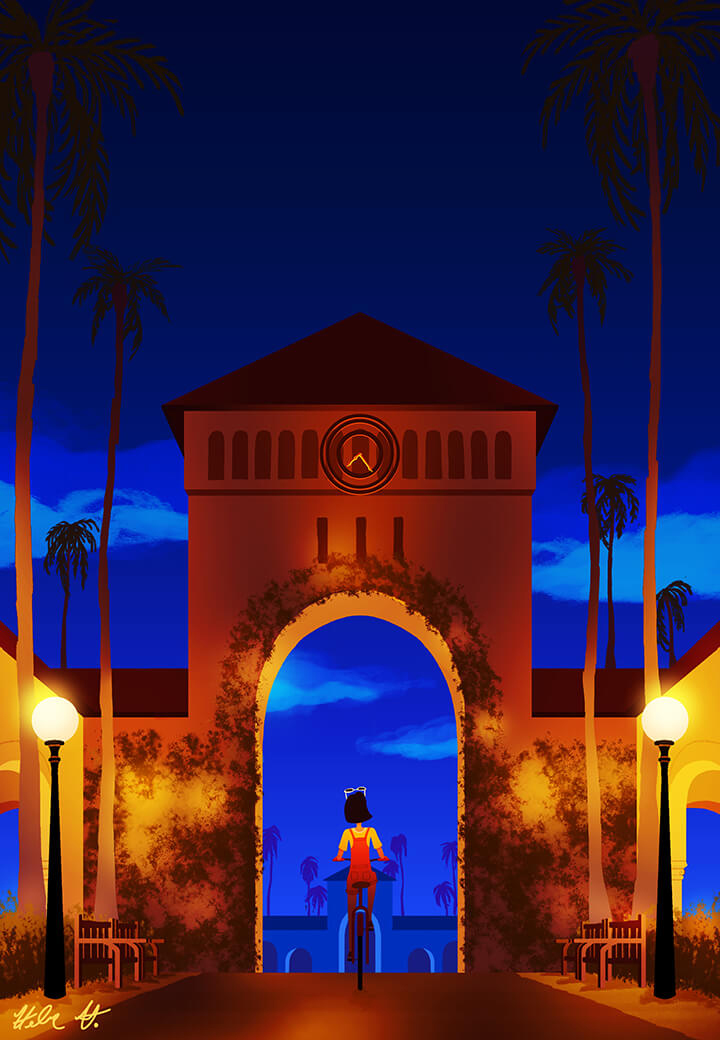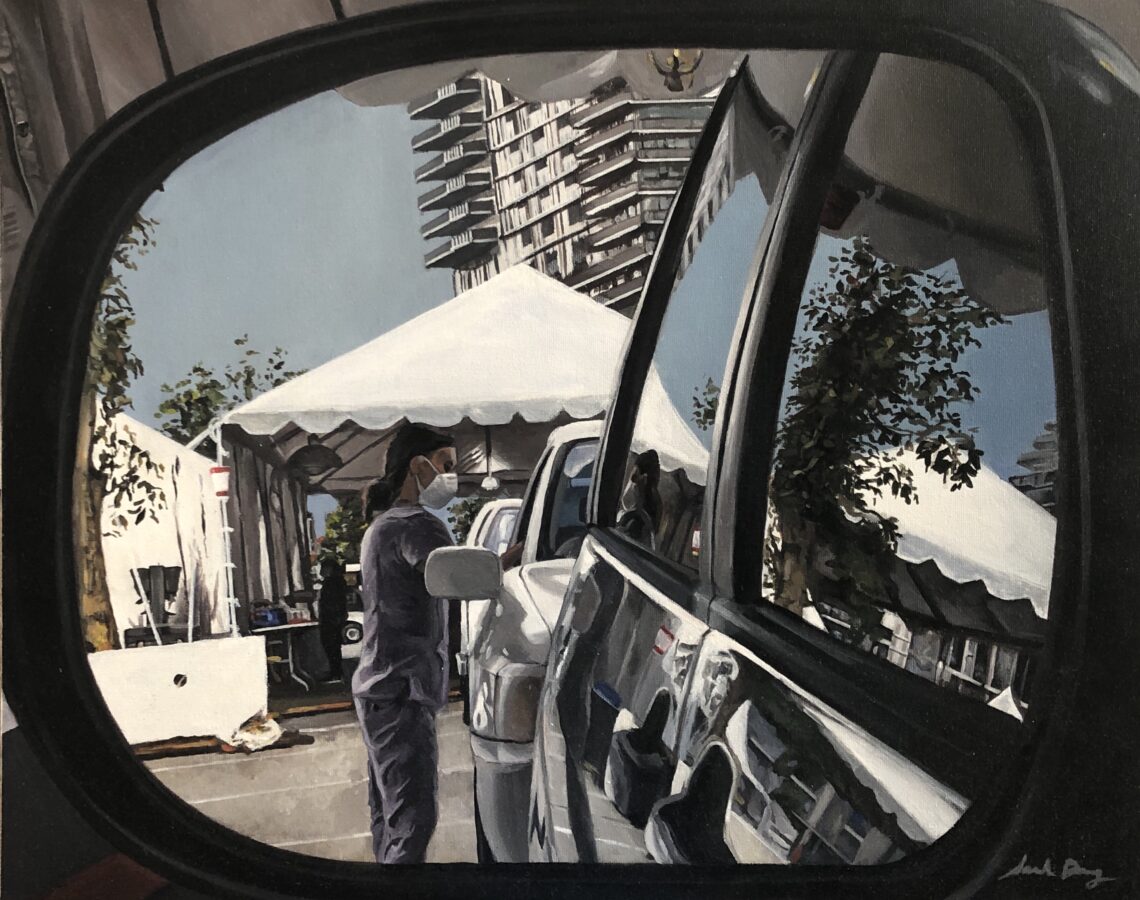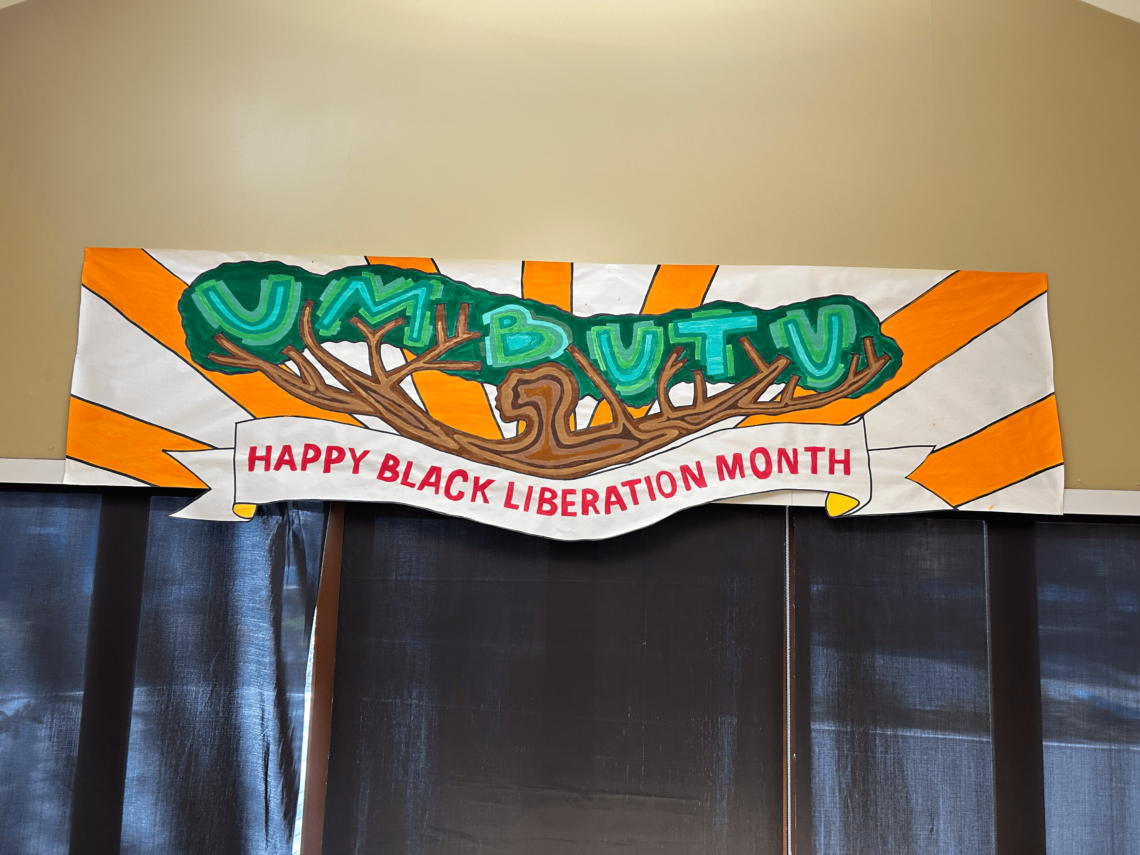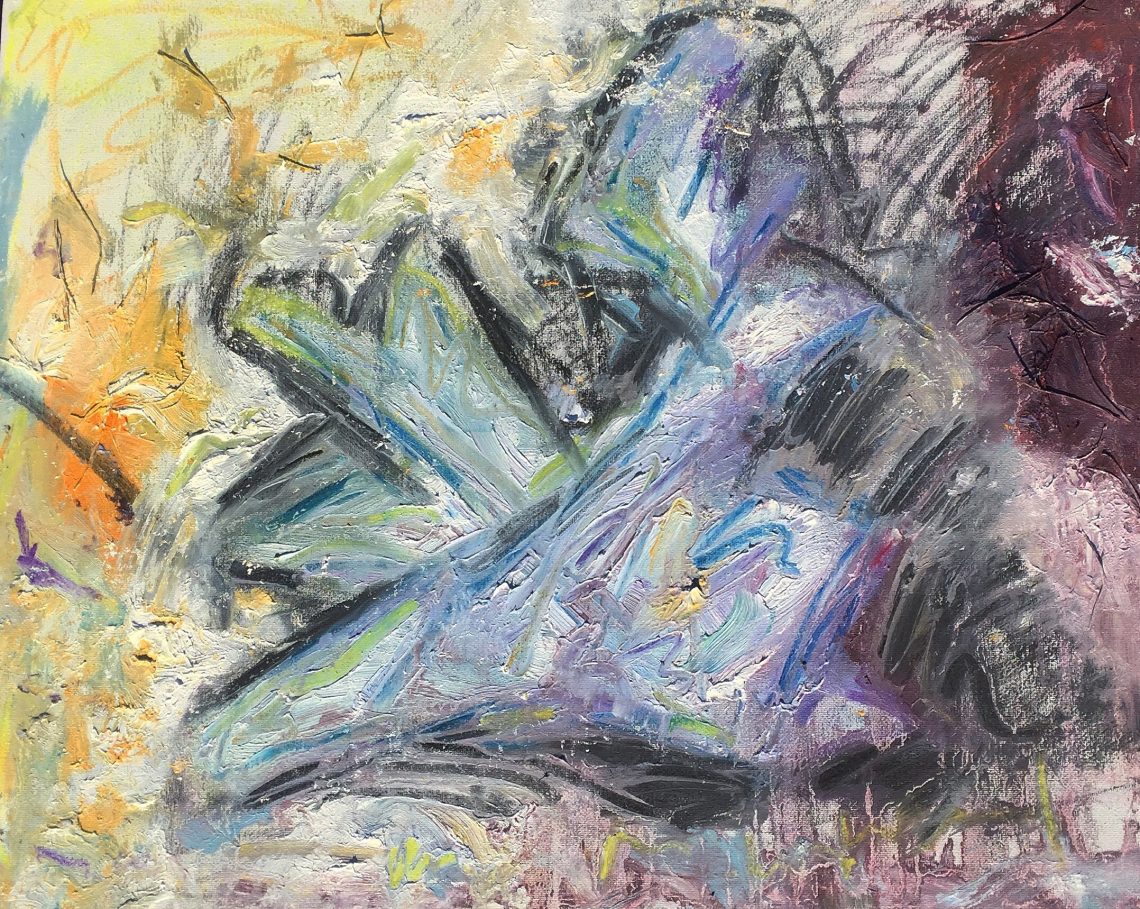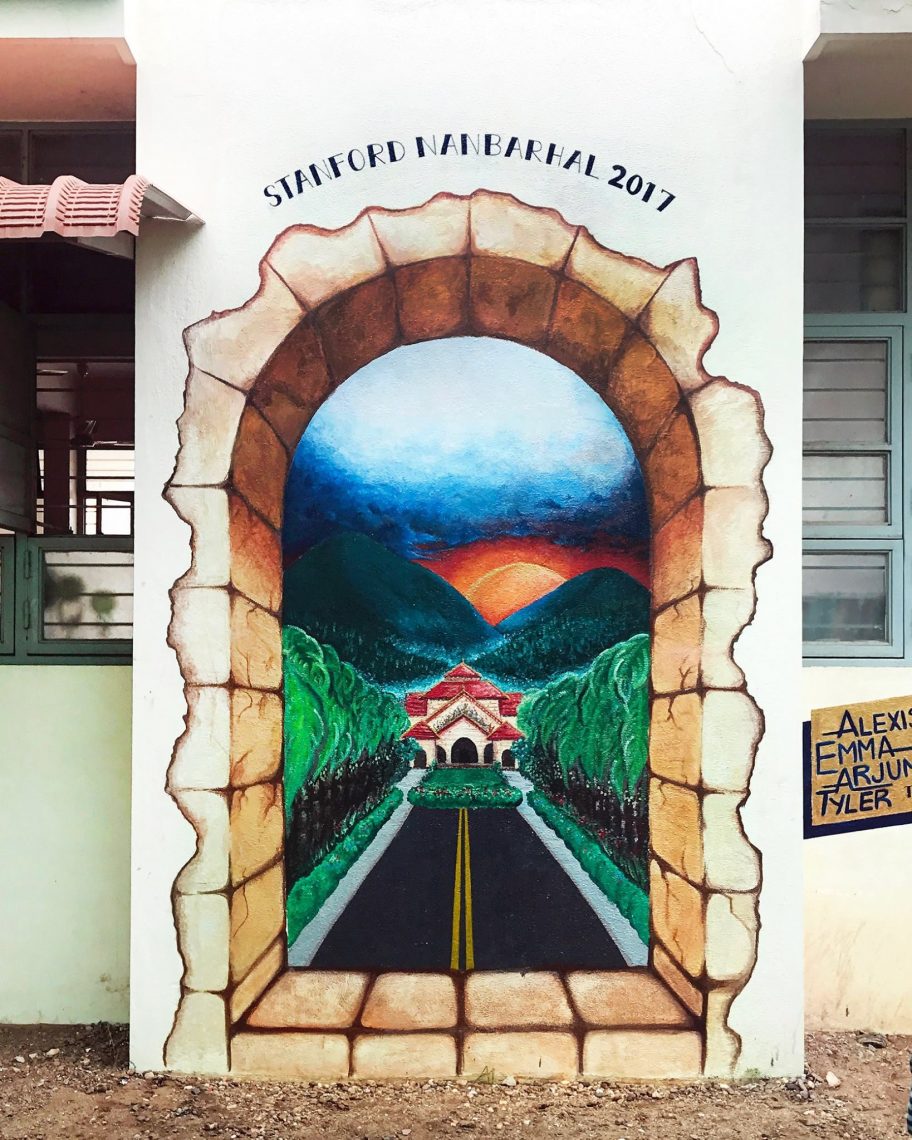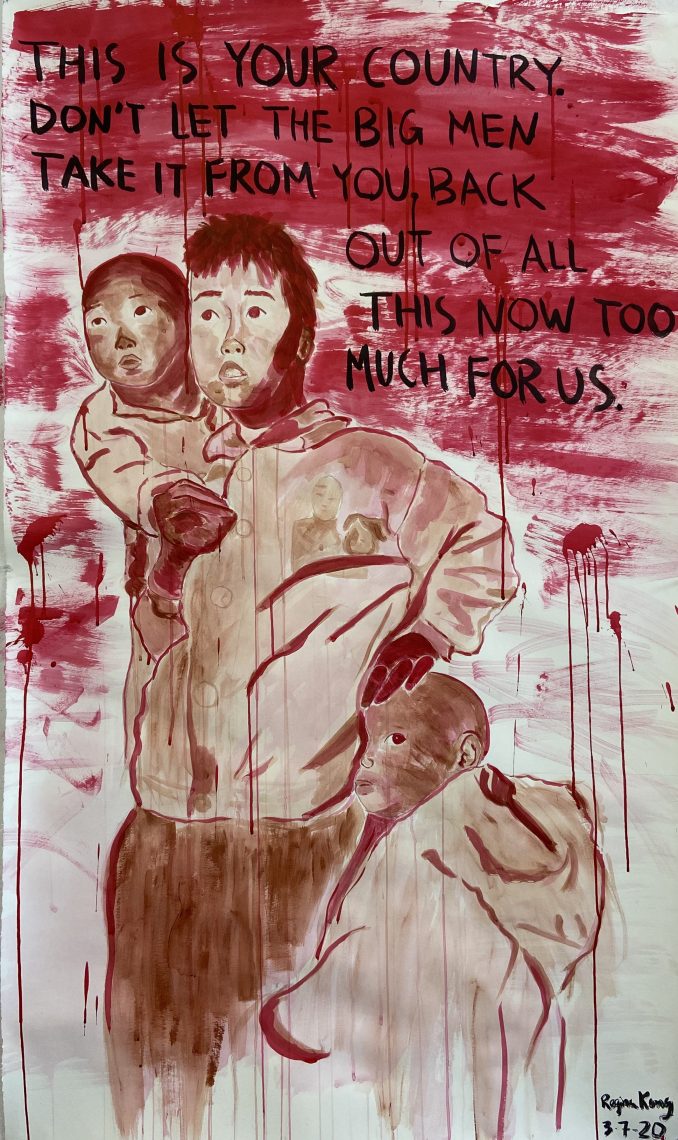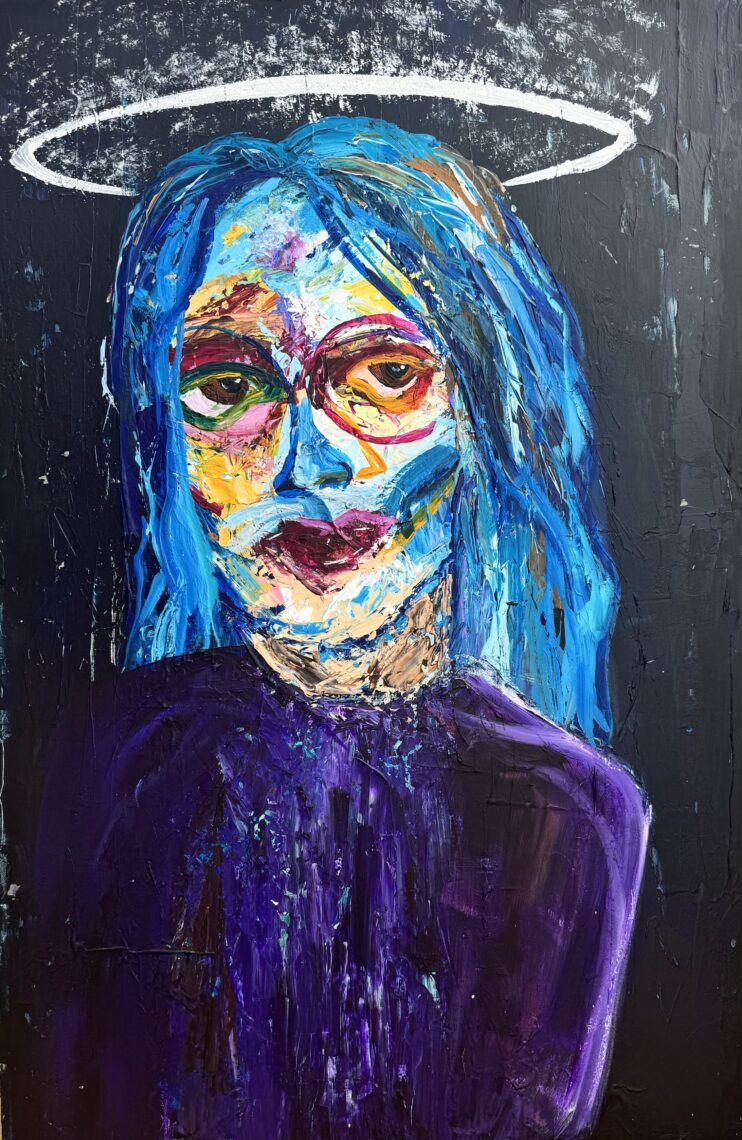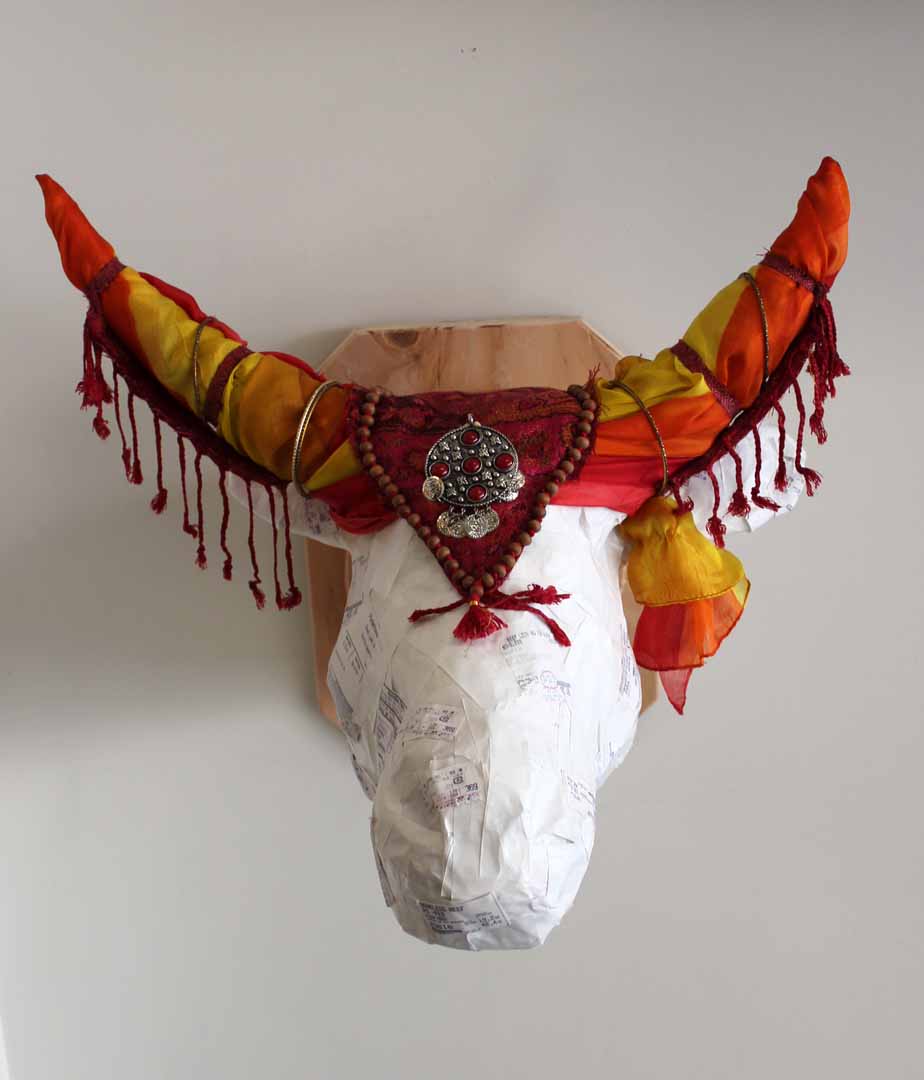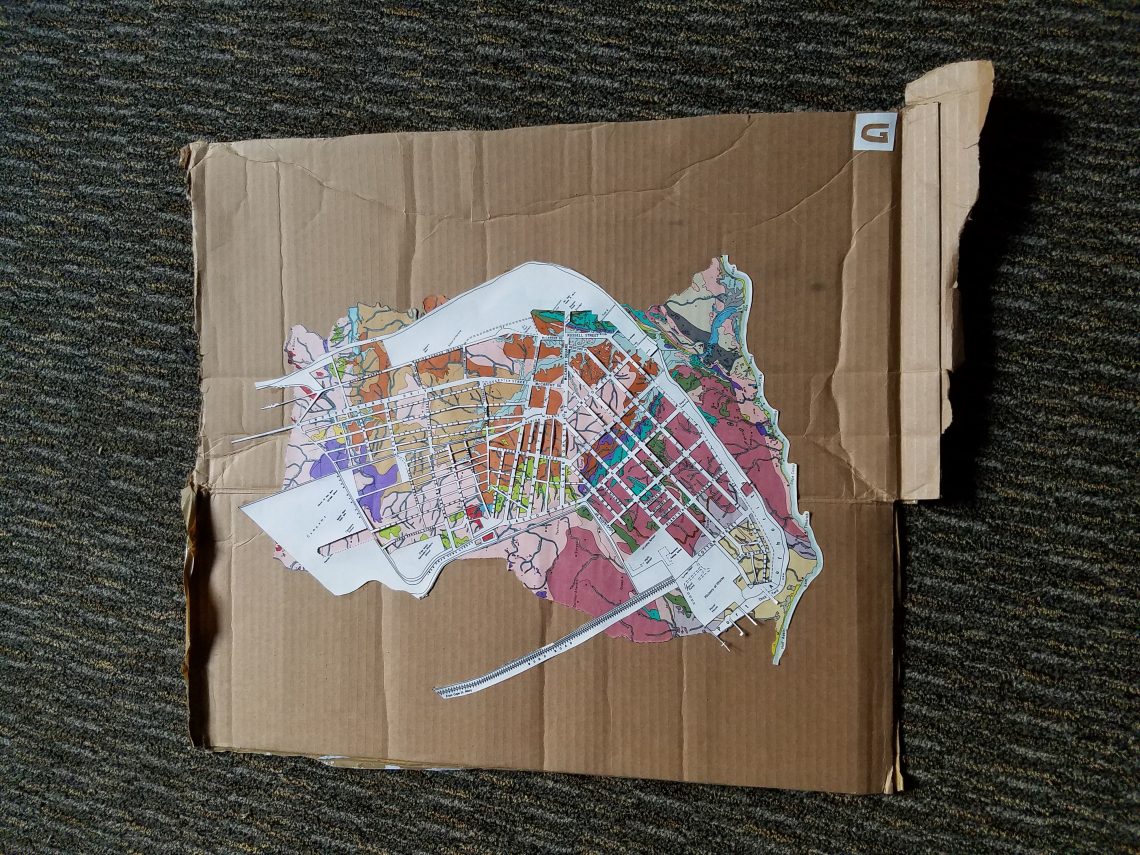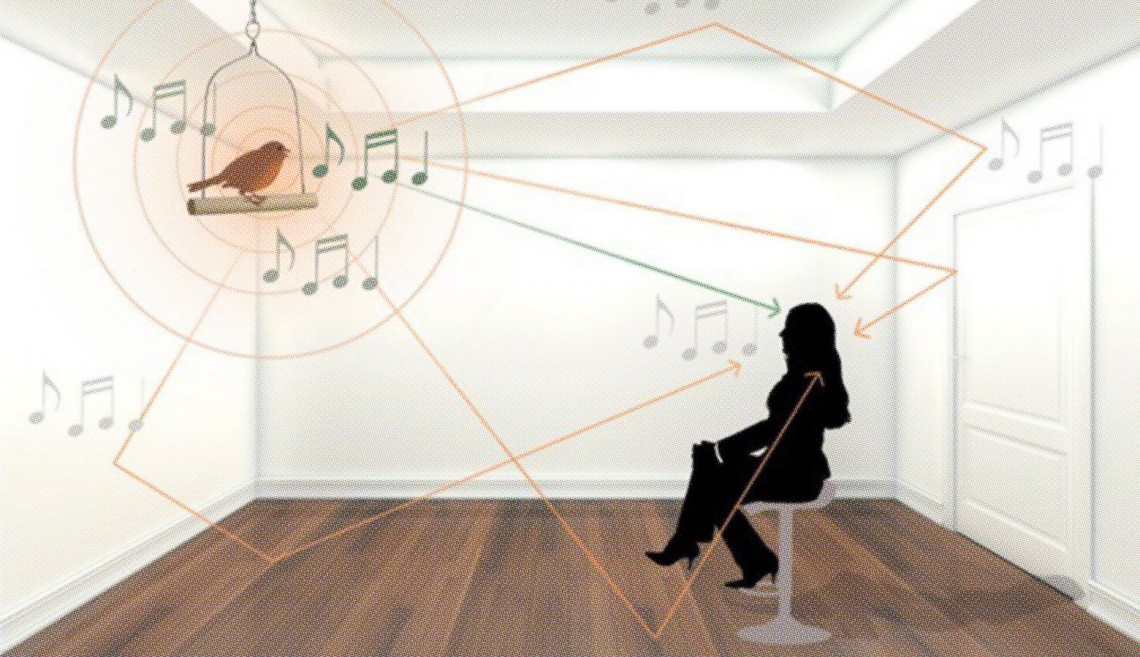
Excavating an Echo
An art historian and an audio engineer seek to recreate a sound lost for centuries.
The Byzantine Empire was married to water. Jutting out at the tip of a peninsula, ancient Constantinople was embraced by the Bosporus Sea on one side and the Marmara Sea on the other. And at its heart, the magnificent Hagia Sophia. At once a bulwark against the sea and an apotheosis of its marvels, the basilica sparkles like the glints on the restless waters outside its walls as natural light roams the surfaces of marble and gold mosaic. “All of these elements are optical: the glitter, the marble . . .” says Stanford art historian Bissera Pentcheva. “They have an auditory dimension as well. When you speak or chant in that space, your breath is extended and attenuated by surfaces of marble and gold.”
“For a building that had such an important aura or presence, to lose its voice is really dramatic”
Hagia Sophia (HAH-yuh soh-FEE-uh) was a massive display of imperial power and majesty for the civilization that endured as one of the most powerful economic, cultural and military forces in Europe for a thousand years. When emissaries of Prince Vladimir of Kiev arrived in the 10th century, they wrote to their liege: “We knew not whether we were in heaven or on earth. For on earth there is no such splendor or beauty, and we are at a loss how to describe it. We know only that God dwells there among men, and their service is fairer than the ceremonies of other nations. For we cannot forget that beauty.”
Yet, today, much of that beauty has been lost to memory. Many of the mosaics are gone. Electric lights have replaced the hundreds of candles that once undulated with sound and breath. Incense no longer perfumes the air. And the ancient chanting that once reverberated in the domed chamber—a sound that influenced the nature of music throughout the medieval world—has been banished from the basilica, now a museum in the adamantly secular nation of Turkey.
“For a building that had such an important aura or presence, to lose its voice is really dramatic,” Pentcheva says.
Having written two books on Byzantine culture—one on multisensory aesthetics, the other on religious iconography—Pentcheva was drawn to the interplay of the senses and the numinous in creating the heightened experience of Hagia Sophia. When she heard a recording of the “Cheroubikon” hymn, originally written for the space, she longed to know what it must have sounded like when sung in the basilica. That desire led her in 2008 to contact two people who were on the same wavelength, so to speak.
Miriam Kolar, a doctoral student at Stanford’s Center for Computer Research in Music and Acoustics, was studying the psychoacoustics of Chavín de Huántar in Peru. She had been making on-site measurements in the pre-Incan temple complex, hoping to recreate what she called “the aural experience of an ancient ceremonial center,” and from that to fathom the psyche and the sociology of the people who experienced the sound.
One of her advisers on the project was Jonathan Abel, a consulting professor at CCRMA whose expertise includes the analysis, synthesis, manipulation and perception of sound. Pentcheva, Abel and Kolar discussed the unique architecture of Hagia Sophia and reviewed data from earlier projects that had measured and documented its acoustics. Supported by grants from the Presidential Fund for Innovation in the Humanities and the Stanford Institute for Creativity and the Arts, they embarked on an unusual collaboration.
“We thought it would be interesting and cool to bring the building back to life in some sense,” says Abel, MS ’84, PhD ’89. “We want to recreate the experience one would have had in ancient Constantinople.”
But first they had to grapple with the tormented, contentious and spectacular history of this unique building. For the obvious way to answer Pentcheva’s question—to simply go to Hagia Sophia and make a recording of early religious music on site—was utterly impossible.
From the time Constantine is thought to have laid the foundation in the fourth century, Hagia Sophia was always a wishbone between church and state. It was destroyed, rebuilt and left in ashes once more. In the sixth century Emperor Justinian began construction on the third and final church, within days of having massacred tens of thousands of rioters who had destroyed its predecessor.
The building that would change the history of architecture was built in a feverish five years. It became the model for churches throughout the Byzantine, Slavic and Orthodox worlds. But none could match its scale or grandeur. With 200,000 square feet of floor space, Hagia Sophia’s largest dome is 182 feet high (about the height of the U.S. Capitol building), 102 feet in diameter, and rests on an arcade of 40 arched windows. The sanctuary alone had 40,000 pounds of silver.
“We want to recreate the experience one would have had in ancient Constantinople.”
It’s difficult to envision today what an enormous operation the church was. It employed 600 people altogether, including about 80 priests, 150 deacons and 40 deaconesses, 60 subdeacons, 160 readers who sang with the 25 psalmists, and 75 doorkeepers. It even had its famous soloists. During the liturgical “Great Entrance,” a magnificent ceremony instituted during Justinian’s reign, choirs would solemnly chant “Hymn of the Cherubim” while the emperor, in full regalia, would enter from the east to meet the Byzantine Patriarch.
“We who mystically represent the Cherubim, and sing the thrice-holy hymn to the life-creating Trinity, now lay aside all earthly care, as we receive the King of All, invisibly escorted by angelic hosts. Alleluia, alleluia, alleluia!”
But which was the King of All? The deity represented by the clergy’s cross—or the emperor using the edifice of religion to magnify imperial power? The emperor doubtless enjoyed the ambiguity.
The basilica remained a center of Christianity until 1453, when conquering Ottomans battered down its massive doors, pillaged its riches, and enslaved or slaughtered those who had taken refuge there. Aya Sofya (the Turkish spelling) became the first imperial mosque of the renamed Istanbul. Mosaics were plastered over and, in the subsequent centuries, minarets, a golden crescent and other Islamic features were added.
In 1934 the building was secularized and is now operated as a museum by a government that adheres to a strict separation of church and state. Don’t try to sing a single note in the Hagia Sophia today; the guards will likely hustle you out at the first do-re-mi.
IF THESE WALLS COULD TALK
In an enclosed space, sound reaches the listener’s ears directly and also from reflections off of the floor, ceiling and walls. The time it takes for these echoes to arrive depends on the size, layout and construction of the room. By reconstructing this pattern of echoes in a computer model, it is possible to create a virtual acoustic representation of the space.
Pop! The sound of a balloon exploding rang out in the empty basilica like a gunshot. The commonplace sound blew open the door to another world.
The first step to recreating the auditory experience of Hagia Sophia was to reconstruct the path a human voice would have traveled 1,500 years ago. But that required access. After extensive negotiations with Aya Sofya Müzesi administrators, in 2010 Pentcheva was granted permission to record inside the building—with the stipulation that she use a distinctly nonmusical sound.
Inexpensive, portable and easy to deploy, a balloon was ideally suited to the purpose. “Balloon pops are convenient for probing the acoustics of a space, as they generate relatively uniform radiation patterns and consistent ‘N-wave’ waveforms,” says Abel.
Sound impulses propagate in all directions, interacting with obstacles along the way. Absorbed by some materials and reflected by others, they arrive at the listener in successive moments, creating overlapping waves that carry with them an imprint of the space.
Pentcheva stood beneath the great dome, two omnidirectional microphones clipped to the hair above her ears. Approximately 10 feet in front of her, a museum guard pricked the balloon while the microphones recorded the pop in stereo. “I was surprised at how loud it could be,” she recalls, noting that art historians tend to want to draw the least possible amount of attention to themselves. “A pistol shot is not the ideal.
Back at Stanford, Abel processed and analyzed the recording to extract a signal—an acoustic fingerprint called the room impulse response—that gives Hagia Sophia its distinctive aura. He then constructed a computational model to apply that fingerprint to any piece of music, thereby transforming it such that the output is sonically identical to what it would have sounded like in the actual space.
Next, to recreate a choir performance, Abel would record individual singers and position them digitally within the virtual acoustic environment. In March 2011, his team recorded 13 members of Cappella Romana, a vocal group based in Portland, Ore., that specializes in early Christian music, singing three chants on the CCRMA stage. Kolar, who has been a recording engineer and concert sound designer for more than a decade, flew back from Peru to assist and advise.
The recording needed to be multitracked, with each singer recorded by a separate microphone into a separate audio track. The team fitted the singers with directional headsets designed to isolate each voice. The ensemble was also recorded with the “bouquet array” of microphones that CCRMA had developed for research in archeological acoustics.
The singers received real-time feedback through earphones, allowing each to hear himself or herself singing in the great church, and to adapt their voices to accommodate what they heard. The results were dramatic: The performers altered tempo, chanting much more slowly than they ordinarily would.
The reason for this, says Abel, is that “the building is super-reflective of acoustic energy. Sound is smeared out, each note bleeding into the next, rendering speech less intelligible.” In a modern concert hall, he notes, the reverberation time is often less than two seconds. In the recreated space of Hagia Sophia, it was an astonishing 11 seconds. Hence, one note would layer upon another, the sound lingering and harmonizing with the new notes. The reverberation is so dense, Abel says, that a chant of three lines takes more than three minutes to sing.
HEARING IS BELIEVING
The Cappella Romana performers were individually miked and received real-time audio feedback, allowing them to hear their voices as if they were singing in Hagia Sophia’s nave. As a result, they drew out their phrasing, chanting more slowly than usual.
“It calls into question the text in a sung form, how those words would be understood,” says Cappella Romana executive director Mark Powell. “It was a kind of elevated style where words were elongated so they might be understood in a large crowd. In the ancient world, with no amplification, how would a speech or sermon be delivered?”
Pentcheva wondered if the theology of the words could ever be intelligible in such a place. But, perhaps, it didn’t need to be. The reverberant acoustics transform the human voice into the “bodiless voice of sound reflections,” forcing the listener to abandon the everyday word for the great word, Logos.
For the citizens of Byzantium it was the usual miracle. They would fill the courtyard outside the basilica at night so they could pour into the building for services at dawn.
Deep inside the renovated Spanish Gothic fortress known as the Knoll, located on the southern edge of campus, is CCRMA’s state-of-the-art “listening room.” Surrounded by black walls, a heptagonal pit rimmed with bleachers sinks to a chicken wire floor. The room is designed to be anechoic—that is, to eliminate sound reflections in the room and block exterior noise. The setup also permits a fully spherical speaker arrangement, thus enabling research in virtual acoustic space.
“We’re going to create a visit to the Hagia Sophia on the acoustic side,” Abel says, flicking the switches on a few computers and a mixing console. A slow, stately, Asiatic wail rises, underwritten by a steady, layered, low-pitched drone in shifting keys that seems to extend into the infinite. If you close your eyes, you can almost imagine you are in Byzantium. “It’s something that hasn’t been heard in 500 years,” Abel whispers in awe as the mesmerizing sound shifts from lament to praise.
He is preparing for the upcoming virtual Hagia Sophia performance with Cappella Romana to take place at the Bing Concert Hall in February. As soon as the new concert hall is ready, Abel and the CCRMA team will take acoustic measurements and prepare to hang 24 loudspeakers that will transport the audience from California to Constantinople.
As the culmination of four years’ work approaches, the researchers reflect on what it has meant to them, what they have learned.
“I’m looking at the world a little differently now,” says Abel. “My perspective changed from something very mathematical, very physical, conceiving of waves propagating through space. But what is it that you are actually hearing? The space is telling you all these things about itself as you’re listening. It’s opened a world onto culture and history. It gave me an awareness of what architecture can do for humans.”
According to Pentcheva, the acoustical wonder makes one “physically aware of your body as a conduit to the world,” creating “the effect of being lost on the surface of something immense, and experiencing your own minuteness as a human being.”
“Based on what we perceive,” she muses, “we believe invisible things.”





